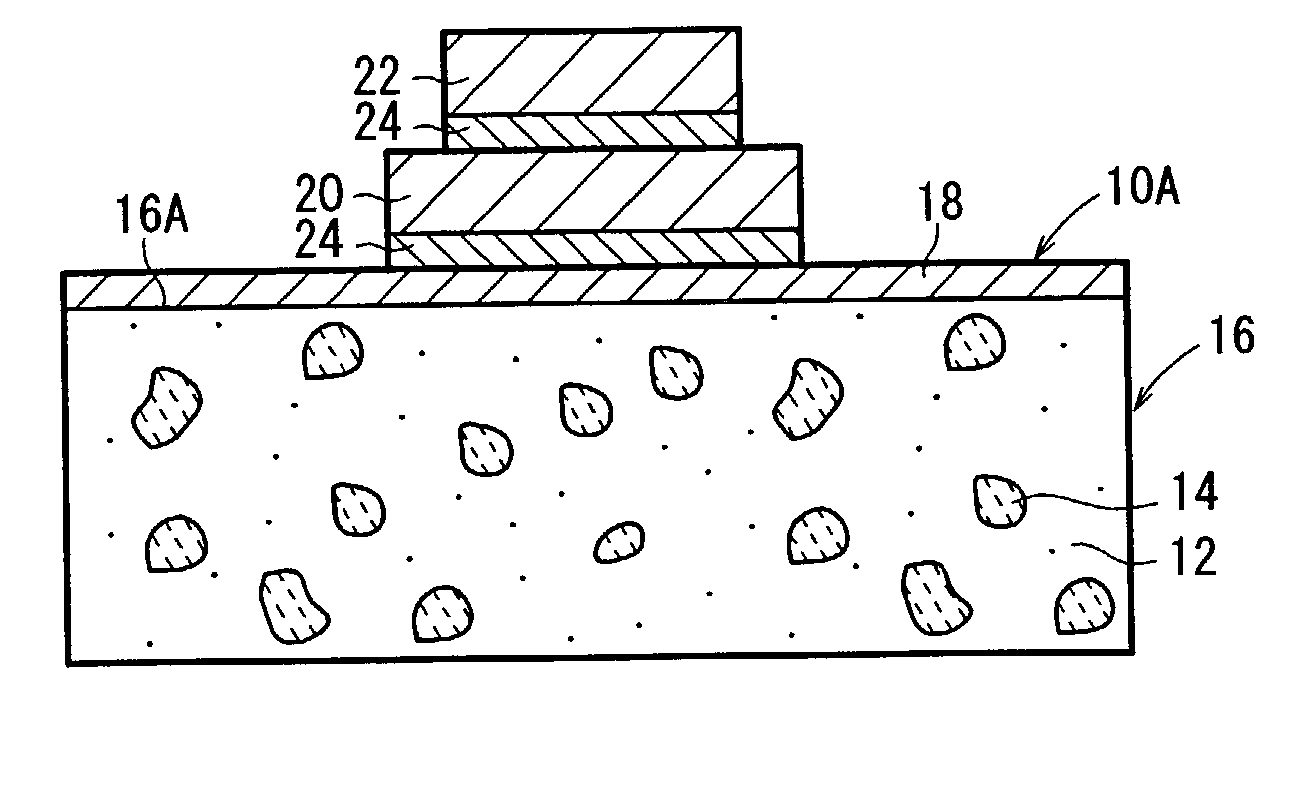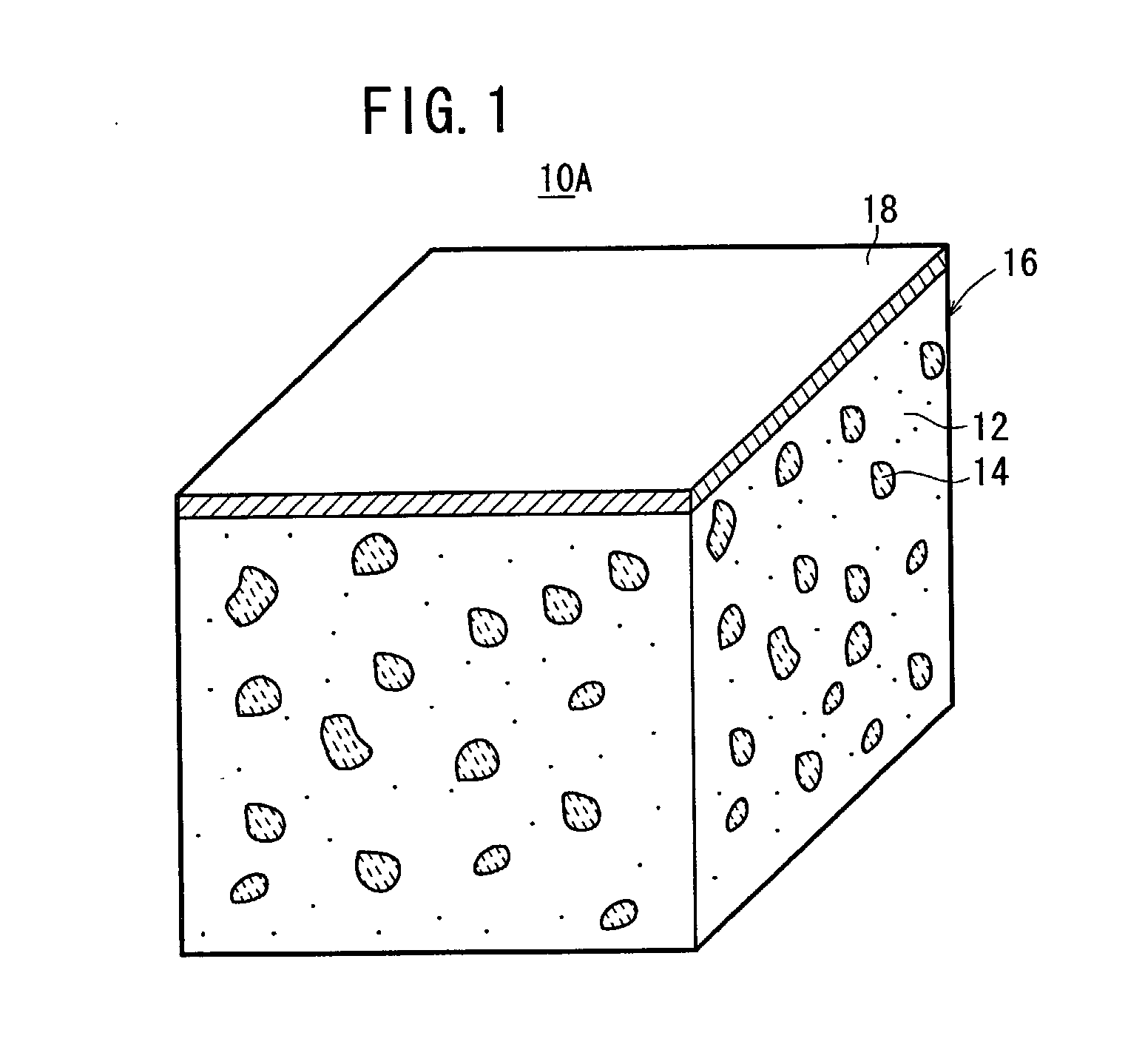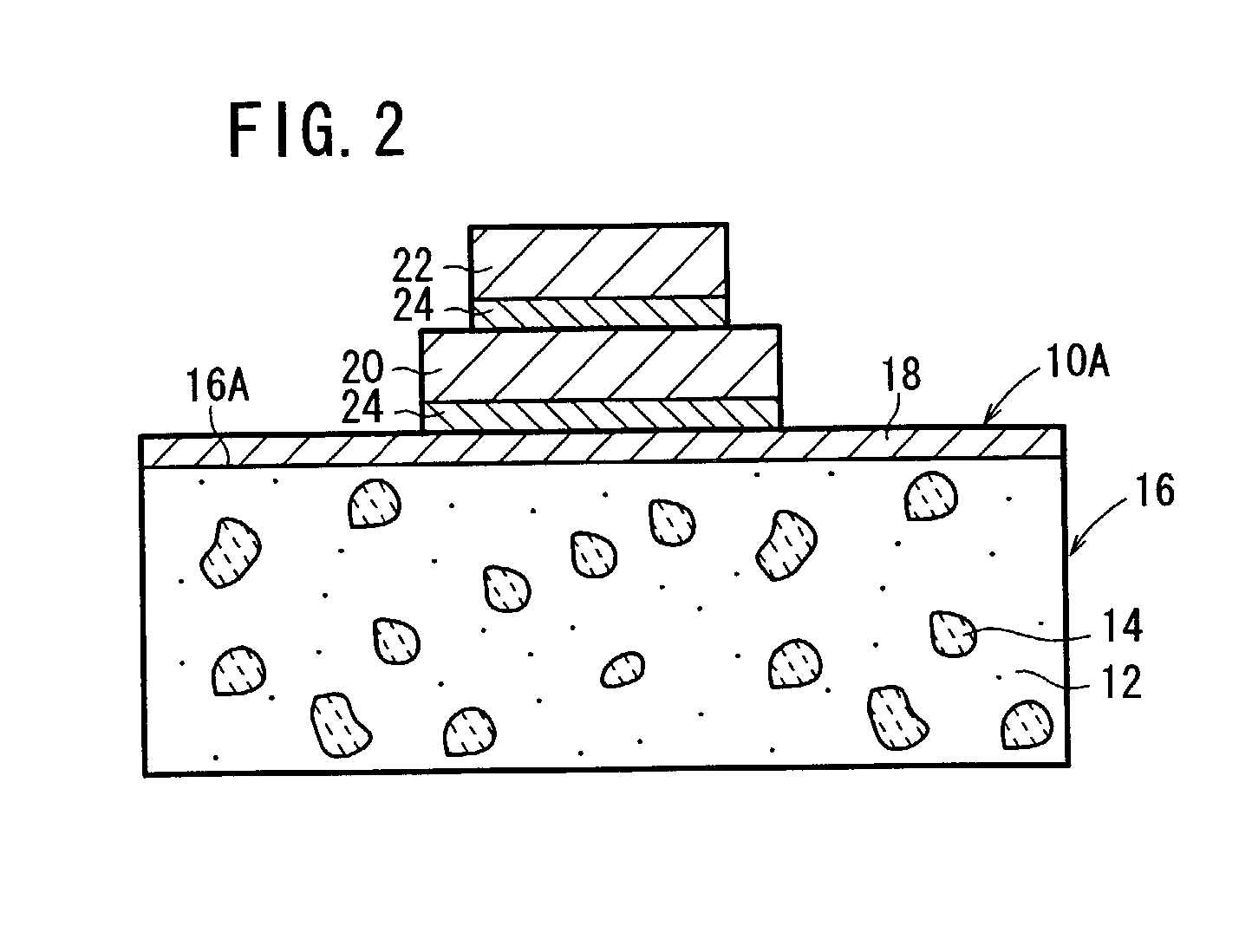Composite material and method of producing the same
a technology of composite materials and materials, applied in the direction of superimposed coating process, liquid/solution decomposition chemical coating, transportation and packaging, etc., can solve the problem of voids (residual bubbles) in the solder layer, insufficient to consider only the coefficient of thermal conductivity,
- Summary
- Abstract
- Description
- Claims
- Application Information
AI Technical Summary
Benefits of technology
Problems solved by technology
Method used
Image
Examples
example 2
[0175] Example 2 concerning the first production method described above shows that a plating layer 18 of 20 .mu.m (NiP plating layer: 20 .mu.m) was formed on only the joining surface 16a of the composite raw material 16 by the electroplating treatment, followed by performing the drying treatment.
[0176] Example 3 concerning the second production method (or the production method concerning the modified embodiment) described above shows that a plating layer 18b of 1 .mu.m (NiP plating layer: 1 .mu.m) was formed on the both surfaces (or the entire surface) of the composite raw material 16 by the electroless plating treatment, followed by performing the drying treatment, and then a plating layer 18a of 19 .mu.m (NiP plating layer: 17 .mu.m, NiB plating layer: 2 .mu.m) was formed on only the joining surface 16a of the composite raw material 16 by the electroless plating treatment, followed by performing the drying treatment.
[0177] Example 4 shows that a plating layer 18b of 1 .mu.m (NiP p...
PUM
| Property | Measurement | Unit |
|---|---|---|
| thickness | aaaaa | aaaaa |
| thickness | aaaaa | aaaaa |
| thickness | aaaaa | aaaaa |
Abstract
Description
Claims
Application Information
 Login to View More
Login to View More - R&D
- Intellectual Property
- Life Sciences
- Materials
- Tech Scout
- Unparalleled Data Quality
- Higher Quality Content
- 60% Fewer Hallucinations
Browse by: Latest US Patents, China's latest patents, Technical Efficacy Thesaurus, Application Domain, Technology Topic, Popular Technical Reports.
© 2025 PatSnap. All rights reserved.Legal|Privacy policy|Modern Slavery Act Transparency Statement|Sitemap|About US| Contact US: help@patsnap.com



